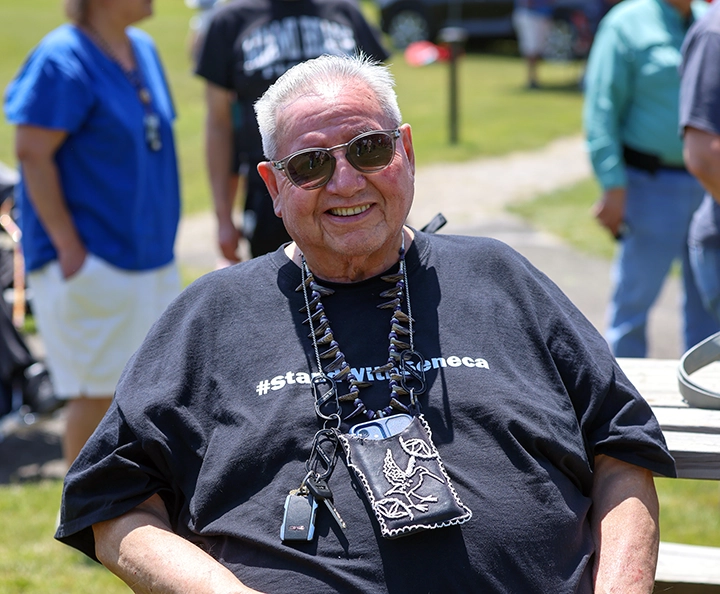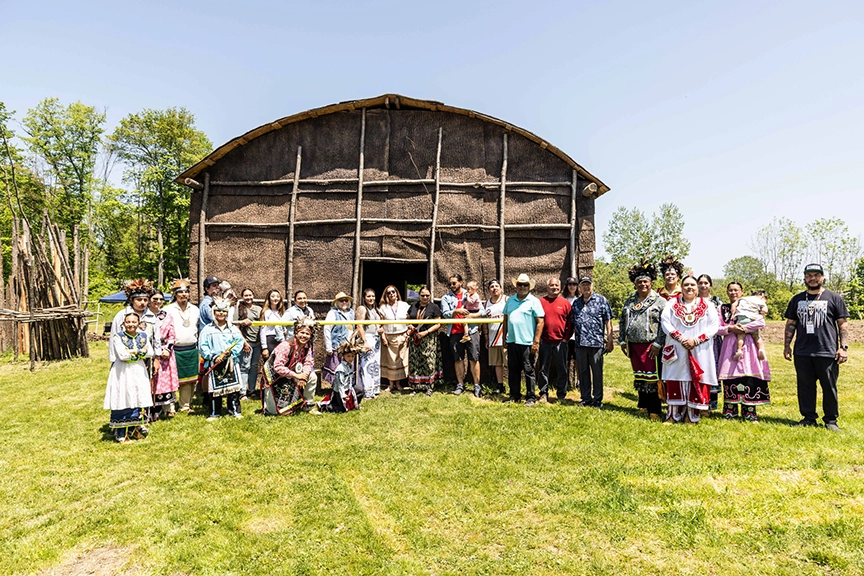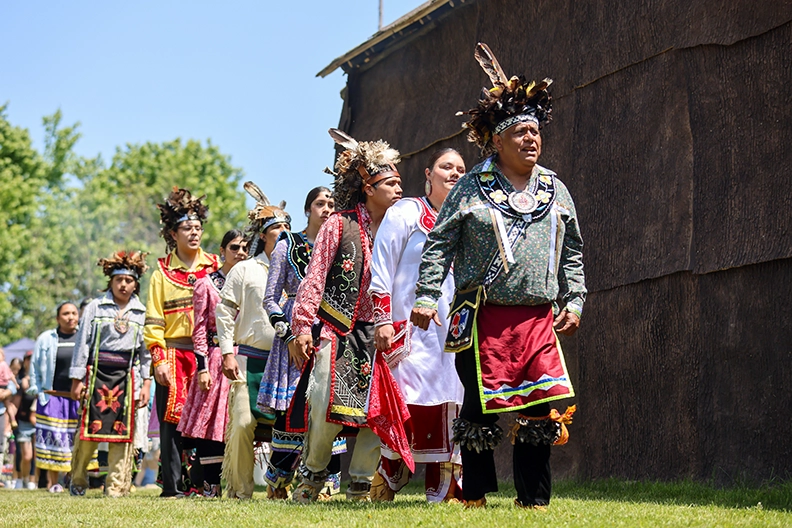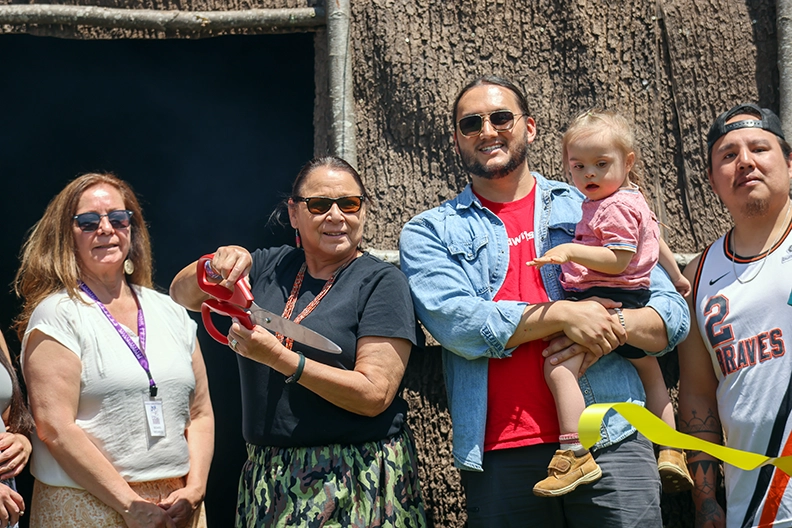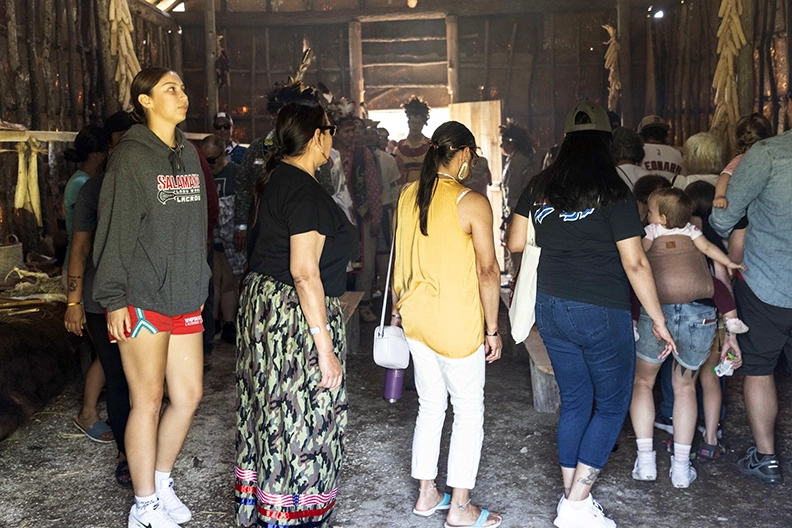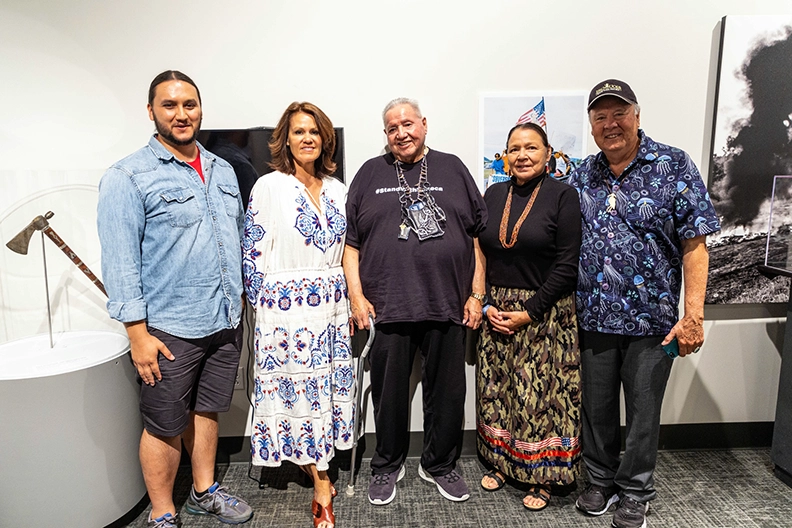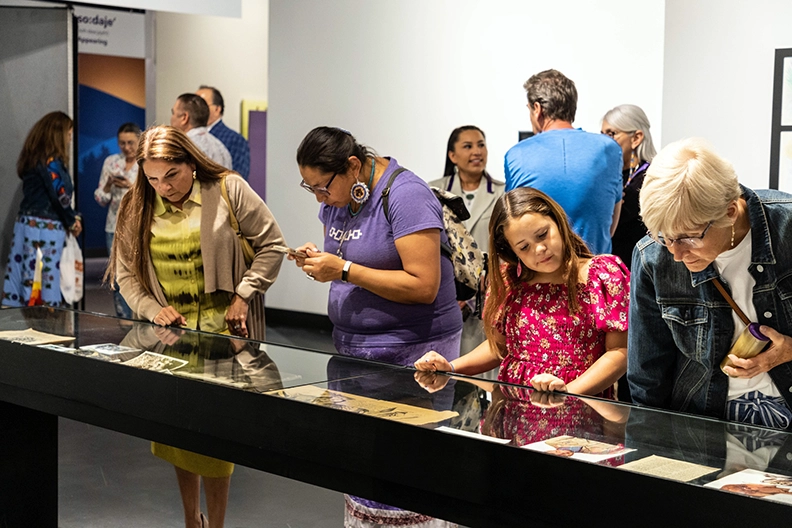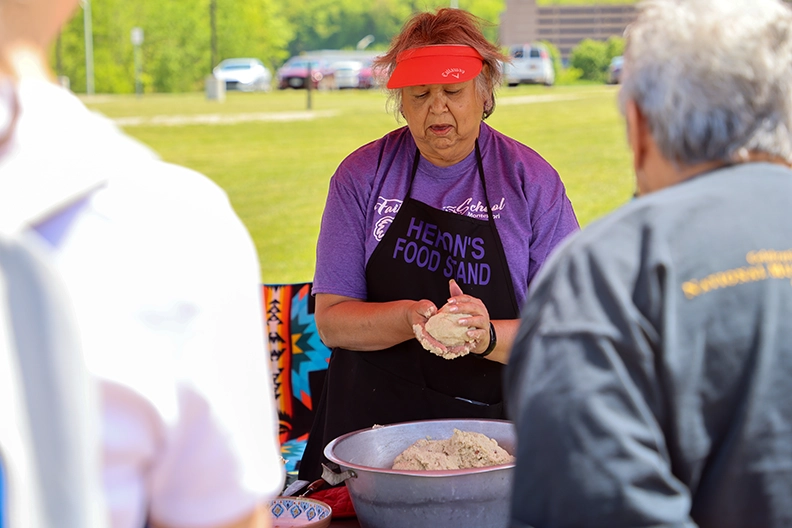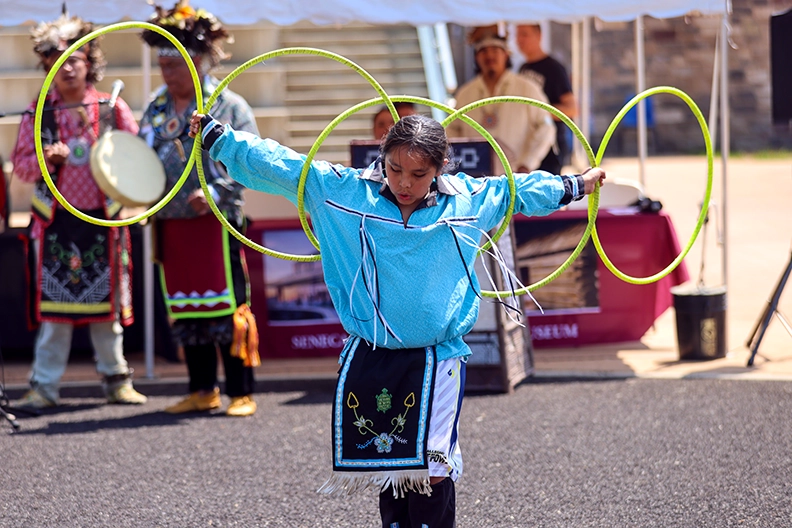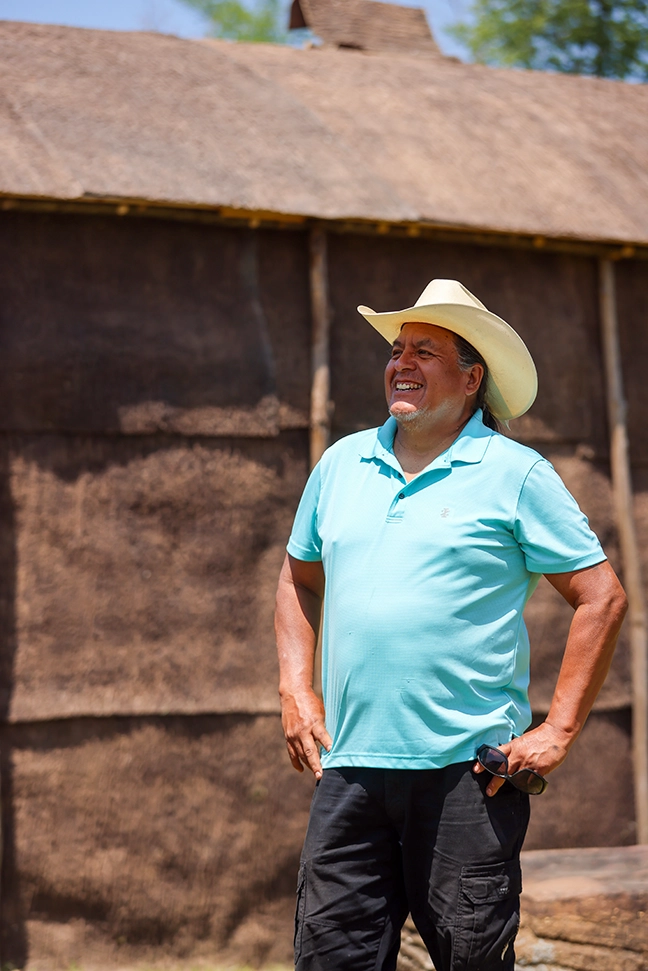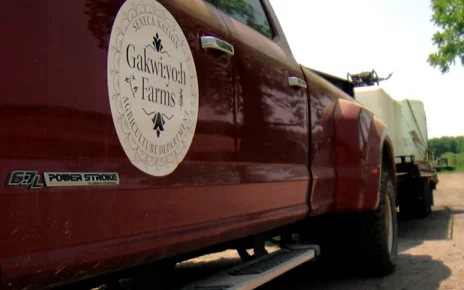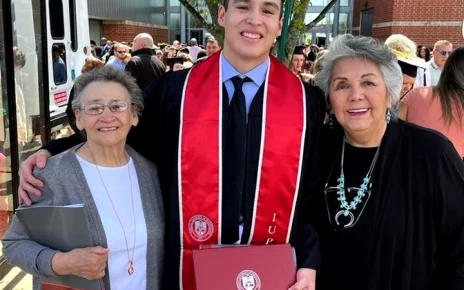and Living Longhouse Open to Public
It was a celebratory weekend at the Onöhsagwë:de’ Cultural Center Seneca-Iroquois National Museum “Carson Waterman: A Retrospective” opened to the public after months of anticipation. This exhibition follows the trajectory of Carson’s decades-long career, from his time as a combat artist in Vietnam to contemporary pieces on politics and Seneca culture.
The afternoon saw the ribbon-cutting of the Living Longhouse, a year-long effort led by Rodney Pierce to build a Longhouse replica on the Cultural Center grounds. Inside, there was a film debut documenting the Longhouse build. Bill Crouse and the Allegany River Dancers led a procession to bless the Longhouse; shortly after, they gave a dance exhibition at the Cultural Center amphitheater.
“Carson Waterman: A Retrospective” is on display until May 2024. The Living Longhouse will be activated with exciting programs and activities. Stay tuned for upcoming announcements.
“Carson Waterman was part of the original group of staff of the Seneca-Iroquois National Museum (SINM) back when it opened in 1977 which means this exhibit is especially important for us. The tile mosaic of his flower design still graces the front of the building at the old SINM and became the logo for the museum. To this day, it serves as the official logo of the now Onöhsagwë: de’ Cultural Center.
For over 40 years, Carson’s work has touched on nearly every aspect of Seneca culture.
His influence was able to reach worldwide audiences when outlets like the internet and social media were nonexistent. He is a strong advocate for Seneca representation and relays social injustice messages through his artwork. To have his retrospective featured here in Seneca territory is one way to honor him, and we strongly believe that it is important to honor our living artists,” shared Hayden Haynes, SINM Director.
Rodney Pierce and crew led the construction of the months long project. Pierce states, “the living longhouse is a reflection back in time of how our ancestors lived. They were very resilient through harsh winters, droughts and labor. I was very honored to be a part of this historical project.
The longhouse had no blueprints 2 follow. We chose a size based on the area 2 build. 30×40 became the dimensions. With help from Mike Crouse, Bucky Bray, and Darcy Scott, we all brought construction experience 2 this valuable project. Each day we would discuss how to move forward on the structure making decisions based upon our experiences. It was difficult at times without a set of drawings but we continued each day on the design. We are very proud of ourselves and the project for the museum and community. Nya:wëh.
I am very grateful for the turn out, of the community coming together and the great weather we shared today, it was meant to be. It was a humbling experience. Carson and I worked on the first longhouse at the original museum back in the 70s. Our projects brought us full circle today.
We:so’ Nya:wëh to the staff and volunteers that made this celebration of art possible: Maurice John, Jr., Caleb Abrams, Rodney Pierce, Leeora White, Randee Spruce, Hayden Haynes, Lisa George, and the many more hands that helped.

